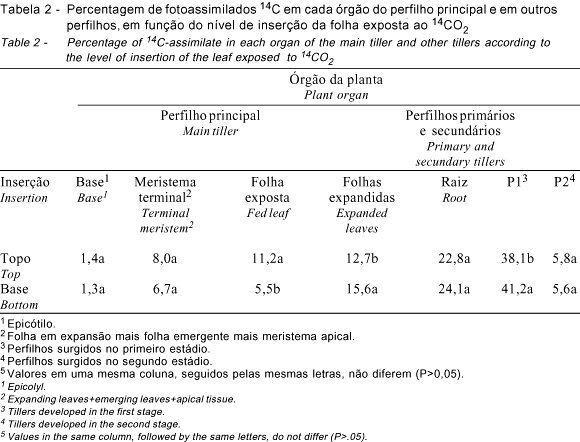The objective of this work was to evaluate the distribution of assimilates produced by the top and bottom leaves of the main tiller in plants of Monbaçagrass (Panicum maximum), in two stages of plant development, and three harvest times after plant exposure to 14CO2 (three, eight and twenty four hours). The experimental treatments were arranged in a 2X2X3 factorial combination. The experimental design utilized was completely randomized. The exposure time to 14CO2 was 20 minutes. Each plant was separated into shoot (main tiller) and tillers developed in the first and second stages of plant development. The shoot was dissected into the following fractions: fully expanded leaves (sheath plus blade), fed leaf (sheath plus blade), terminal meristem (expanding leaves plus emerging leaves plus apical meristem), base and root system. The radioactivity of the samples was determined in a liquid scintillation spectrometer. The percentage of 14C-assimilates retained in the fed leaf did not vary with time of harvesting after exposure. Most of the plant 14C assimilates were retained in the main tiller, mainly when the fed leaf was the top one, which retained more assimilates than the bottom leaf. The bottom leaf translocated more assimilates to tillers than the top leaf. Percentage assimilates retained in main tiller was higher in plants of the first developmental stage relative to the second one. Sizeable amount of activity was found in non-fed adult leaves of the main tiller, mainly when the bottom leaf was the fed one.
source; sink and translocation





